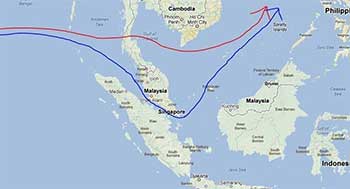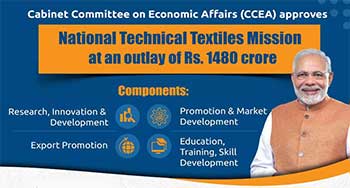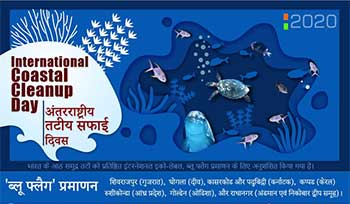Kra Canal Project
Why in NEWS?
- India, US, Australia shown interest in building strategic Kra Canal Project in Thailand.

ABOUT
- Thailand has claimed that it is not only in talks with China but with India, USA as well as Australia to build the strategically proposed Kra Canal in the Southern part of the country that could change the landscape of shipping in the region allowing ships to bypass the Strait of Malacca.
- India has been worried earlier that if China constructs the canal PLA Navy will have direct access to the Andaman Sea bypassing Malacca Straits.
- If completed, the 135-kilometer long canal will connect the Gulf of Thailand with the Andaman Sea, providing a short-cut for vessels to navigate between the South China Sea and the Indian Ocean.
- Besides the economic reasons, a Thai canal would pose a little threat to the US and its allies, including India, which can effectively counter Chinese expansionism with the up-gradation of domestic forward bases in the Andaman and Nicobar Islands.
- The real concern is that it would further undermine the independence of poor southeast Asian countries like Myanmar and Cambodia, which have comparatively weak civil societies that are highly vulnerable to Chinese interference.
- Thai government has also dropped the purchase of Chinese-made military submarines for a year following public outrage over the controversial agreement.
Kra Canal
- The Thai Canal, also known as Kra Canal refers to proposals for a canal that would connect the Gulf of Thailand with the Andaman Sea across the Kra Isthmus in southern Thailand.
- The idea of a Canal at the site has been proposed since 16th century and in modern times since the 1930s, but has never materialized due to high cost environmental repercussions and geo strategic obligation.
Why Important ?
- Malacca Straits — the world’s busiest maritime lane, through which an estimated 84,000 ships carrying around 30% of global trade transit each year.
- The World Bank estimates over 140,000 ships will seek to transit the Malacca Straits annually by the end of the decade, far in excess of its capacity of 122,000 ships.
- The Kra canal would provide an alternative to transit through the Straits of Malacca and shorten transit for shipments to China from West Asia by 1,200 km
- It is thus envisaged that such a canal would improve transportation in the region, similar to the Panama Canal and Suez Canal.
Benefits for shipping
- The canal will enable ships to bypass the Malacca Strait thus saving 1200 km
- Ships could reduce up to 72 hours of sailing time
- Shipping and logistics companies would welcome the reduced operating and voyaging costs between East Asia and Europe.
- Reduce the risk of running into pirates and avoid congestion.
The Economic cost
- The proposed canal project is estimated to be completed within eight to ten years at the cost of $28 billion USD.
- Plans to build an economic zone alongside the canal – Thailand economy will get a boost
National Technical Textiles Mission
IN NEWS
- The Government has approved the proposal for creation of National Technical Textiles Mission for a period of 4 years (2020-21 to 2023-24) with an outlay of Rs.1480 crores.

About Technical Textiles
- Technical textiles are functional fabrics that have applications across various industries including automobiles, civil engineering and construction, agriculture, healthcare, industrial safety, personal protection etc.
- Based on usage, there are 12 technical textile segments; Agrotech, Meditech, Buildtech, Mobiltech, Clothtech, Oekotech, Geotech, Packtech, Hometech, Protech, Indutech and Sportech.
- For example, ‘mobiltech’ refers to products in vehicles such as seat belts and airbags, airplane seats; geotech, which is incidentally the fastest growing sub-segment, used to hold back soil, etc.
Funds Distribution
The distribution of funds is
- For Research Innovation & Development – Rs. 1000 crores,
- For Promotion and Market Development- Rs.50 crore,
- For Education, Training and Skilling- Rs. 400 crore, and,
- For Export Promotion – Rs.10 crores and balance Rs.20 crores for administrative expenses.
About the Mission and Resesarch
- It aims to position the country as a global leader in technical textiles and increase the use of technical textiles in the domestic market.
- The focus of the Mission is for developing on usage of technical textiles in various flagship missions, programmes of the country including strategic sectors.
- The use of technical textiles in agriculture, aquaculture, dairy, poultry, etc. Jal Jivan Mission; Swachch Bharat Mission; Ayushman Bharat will bring an overall improvement in cost economy, water and soil conservation, better agricultural productivity and higher income to farmers per acre of land holding in addition to promotion of manufacturing and exports activities in India.
- The use of geo-textiles in highways, railways and ports will result in robust infrastructure, reduced maintenance cost and higher life cycle of the infrastructure assets.
- Promotion of innovation amongst young engineering /technology/ science standards and graduates is proposed to be taken up by the Mission; alongwith creation of innovation and incubation centres and promotion of 'start-up' and Ventures'.
- An export promotion council for technical textiles will be set up.
- The research output will be reposited with a ‘Trust’ with the Government for easy and assessable proliferation of the knowledge thus gained through research innovation and development activities.
- A sub-component of the research will focus on development of bio degradable technical textiles materials, particularly for agro-textiles, geo-textiles and medical textiles. It will also develop suitable equipment for environmentally sustainable disposal of used technical textiles, with emphasis on safe disposal of medical and hygiene wastes.
- There is another important sub-component in the research activity aiming at development of indigenous machineries and process equipment for technical textiles, in order to promote 'Make In India' and enable competitiveness of the industry by way of reduced capital costs.
- Six courses on for skill development in Technical Textiles sector have been on- boarded on National Skills Qualifications Framework (NSQF) for providing training in the sector.
- The mission shall work for holistic development of entire technical textile sector on pan-India basis.
Indian Medicine Central Council (Amendment) Bill 2020 and Homoeopathy Central Council (Amendment) Bill 2020
IN NEWS
- The Rajya Sabha passed the Homoeopathy Central Council (Amendment) Bill, 2020 and the Indian Medicine Central Council (Amendment) Bill, 2020.

ABOUT
- Homoeopathy Central Council (Amendment) Bill amends the Homoeopathy Central Council Act, 1973. The Act sets up the Central Council of Homoeopathy which regulates homoeopathic education and practice. The bill replaces the Homoeopathy Central Council (Amendment) Ordinance, 2020 which was promulgated in April this year.
- The Indian Medicine Central Council (Amendment) Bill amends the Indian Medicine Central Council Act, 1970. The Act provides for the constitution of a Central Council which regulates the education and practice of the Indian medicine system including Ayurveda, Yoga and Naturopathy. The bill replaces the Indian Medicine Central Council (Amendment) Ordinance, 2020 which was promulgated in April this year.
- The bills will ensure quality education and health care system in the country.
- It will also ensure the unified research in the Homeopathy and Allopathic medicine systems
WAY FORWARD
- India has the potential to become world leader in the areas of Homeopathy and other ancient medicine systems.
- The government is committed to bring the positive changes in the Indian medicine systems in a transparent manner to provide quality health care facilities.
- Homeopathy, Yoga and Naturopathy are the ancient medicine systems and these have the scientific basis.
“BLUE FLAG” International Eco-label
IN NEWS
- On the eve of International Coastal Clean-Up Day which is celebrated across 100 countries since 1986, Union Ministry of Environment, Forest and Climate Change (MoEFCC) announced at a virtual event that for the first time eight beaches of India are recommended for the coveted International eco-label, the Blue flag certification.

ABOUT
- Blue Flag beaches are considered the cleanest beaches of the world.
- International Coastal Cleanup Day got its start in 1986 when Linda Maraniss met Kathy O’Hara while working for Ocean Conservancy. O’Hara had just completed a report called Plastics in the Ocean: More Than a Litter Problem.
- The eight beaches are Shivrajpur in Gujarat, Ghoghla in Daman&Diu, Kasarkod and Padubidri beach in Karnataka, Kappad in Kerala, Rushikonda in Andhra Pradesh, Golden beach of Odisha and Radhanagar beach in Andaman and Nicobar.
- The event also saw the launch India’s own eco-label BEAMS by e-hoisting the flag -#IAMSAVINGMYBEACH simultaneously at these eight beaches.
- MoEFCC in pursuit of promoting its policies for sustainable development in coastal regions have embarked upon a highly acclaimed program “BEAMS” (Beach Environment & Aesthetics Management Services) under its ICZM (Integrated Coastal Zone Management) project.
- This is one of the several other projects of ICZM that Govt of India is undertaking for the sustainable development of coastal regions, striving for globally recognized and the coveted eco-label ‘Blue flag”.
- With a view to protect and conserve the coastal and marine ecosystems and environment through a holistic coastal management, the Ministry of Environment, Forests & Climate Change launched the Integrated Coastal Zone Management (ICZM) activities in India for a holistic approach with an interactive, dynamic, multidisciplinary, and iterative planning process to promote sustainable development & management of coastal zones through its own wing SICOM.
OBJECTIVE OF BEAMS
- The objective of BEAMS program is to abate pollution in coastal waters, promote sustainable development of beach facilities, protect & conserve coastal ecosystems & natural resources, and seriously challenge local authorities & stakeholders to strive and maintain high standards of cleanliness, hygiene & safety for beachgoers in accordance with coastal environment & regulations. This program promotes beach recreation in absolute harmony with nature.
CONCLUSION
- Government is committed to clean the beaches across the country. Beaches are the testimony to environment in the coastal area.
- The issue of marine litter and oil spilling has caused disturbances to the aquatic life and the Government of India is undertaking various efforts for the sustainable development of coastal regions.
- Thus, adoption of ICZM principles for managing and sustainably developing our coastal regions is helping India in keeping with its commitments to international agreements on ICZM.







